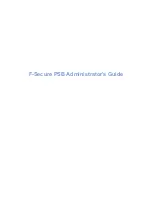
56
Load to Mod Slot
The TransMod system includes a feature that allows you to load the initial parameter values from a separate preset as the
current TransMod slot’s modulation depths.
To use this function, firstly, load a preset or create your own. Then, select a TransMod slot and enable the
Load to Mod
Slot
button (located in the synth’s preset picker).
Then, load a preset in any of the usual ways (described in section 1:3).
The initial values of all controls (those seen in the Main view) are loaded as the new modulation depths for the selected
TransMod slot. All other data in the loaded preset (its own TransMod modulation depths and all initial values of non-
modulated controls) are ignored.
Contents of loaded preset
Initial values of loaded
preset’s modulateable
controls loaded as TransMod
slot modulation depths
All other contents of loaded
preset are ignored
Load to Mod slot
button
Patch-morphing effects
Any non-modulateable parameter settings are not translated into modulation depths, so this feature does not represent full
patch morphing. However, it allows most aspects of patch morphing while avoiding non-useful morphing parameters and
clicks through button modulation. It is still possible to experience clicking during TransMod modulation – the main possible
cause of this is modulation of the following parameters:
• Filter mode
• Changing LFO shapes
• Sub-osc octave parameters (Strobe)
There are other possible ways that clicks can occur in sounds – with stepped/square LFO shapes, fast envelope attack/
release settings and so on – but these are not due to the TransMod system.
Usage hints
The
Load to Mod Slot
function puts incredibly dynamic sounds within easy reach, allowing wild fluctuations in parameters
when altering just one modulator. You can load up to 8 presets into the available TransMod slots and modulate them all in
real time, resulting in a staggering variety of complex new sounds.
Some useful modulation sources for use with this function are Voice, Unison and MRand, which can produce richly varied
and chaotic performances featuring different parameter settings for each voice. Also, try using a performance modulator
like aftertouch, mod wheel or velocity as the modulation source.
Be warned that it in many situations, it is unlikely that the same sound will ever be heard more than once when using the
synths in this way. Therefore, you may want to constantly record an instrument’s output to capture the performance.
Содержание DCAM SYNTH SQUAD
Страница 1: ......
Страница 2: ......
Страница 26: ...26 Shaper Filter Amp sections...
Страница 109: ......
Страница 110: ......
















































